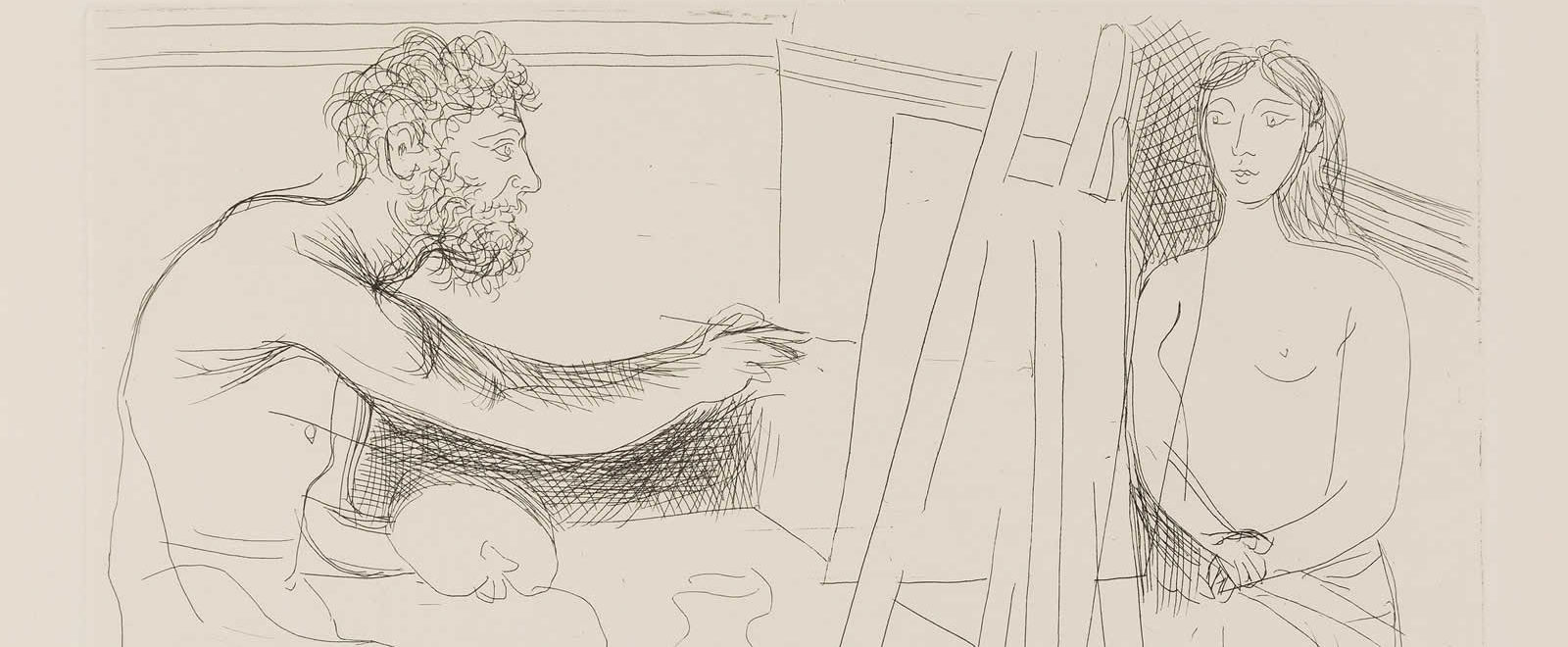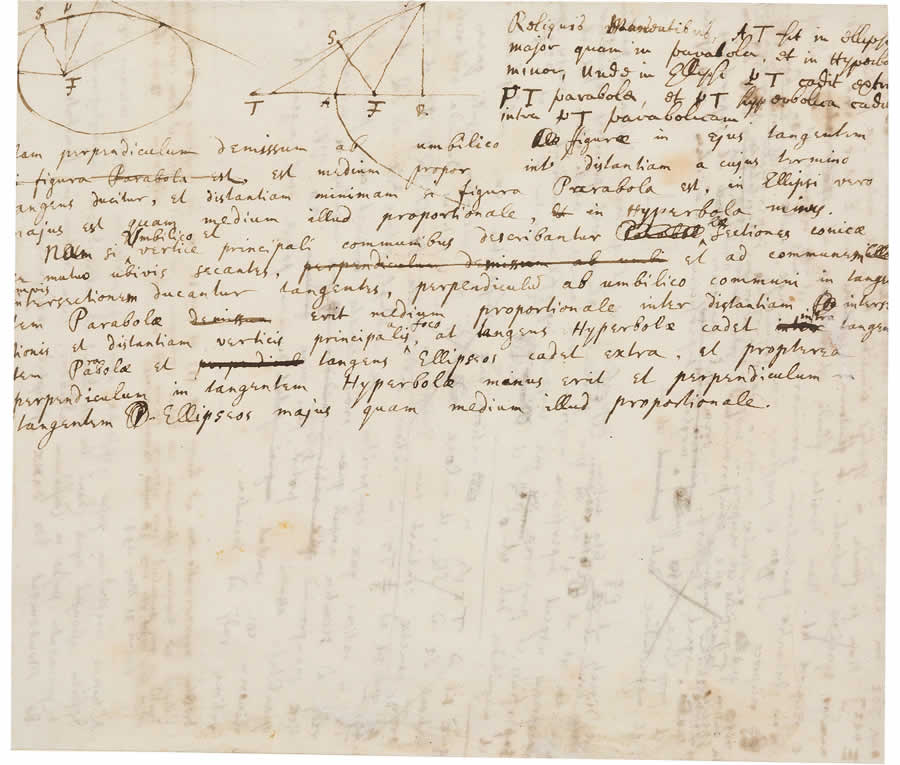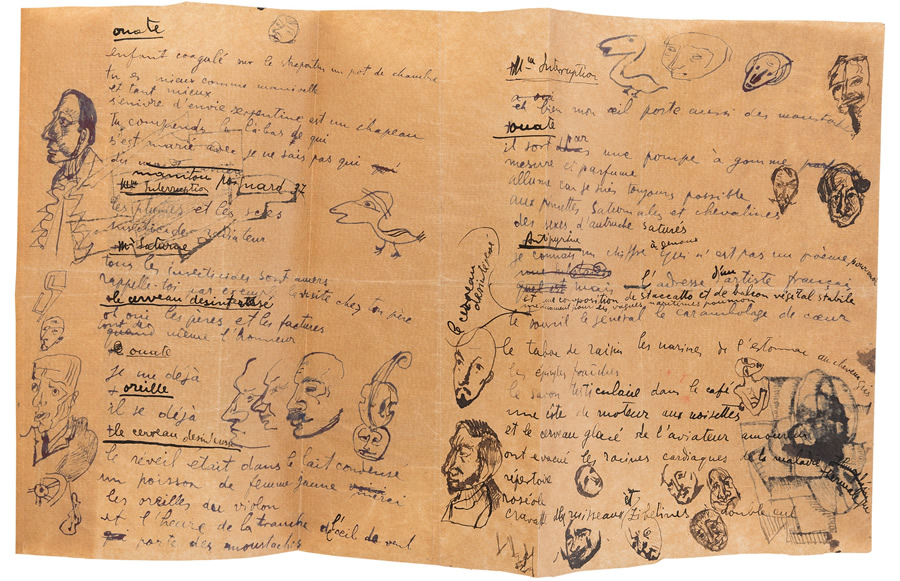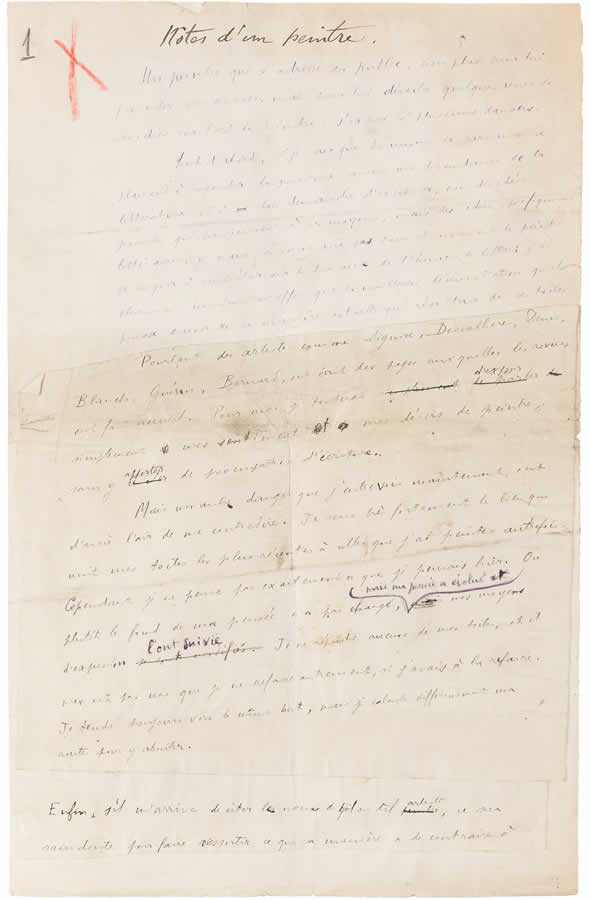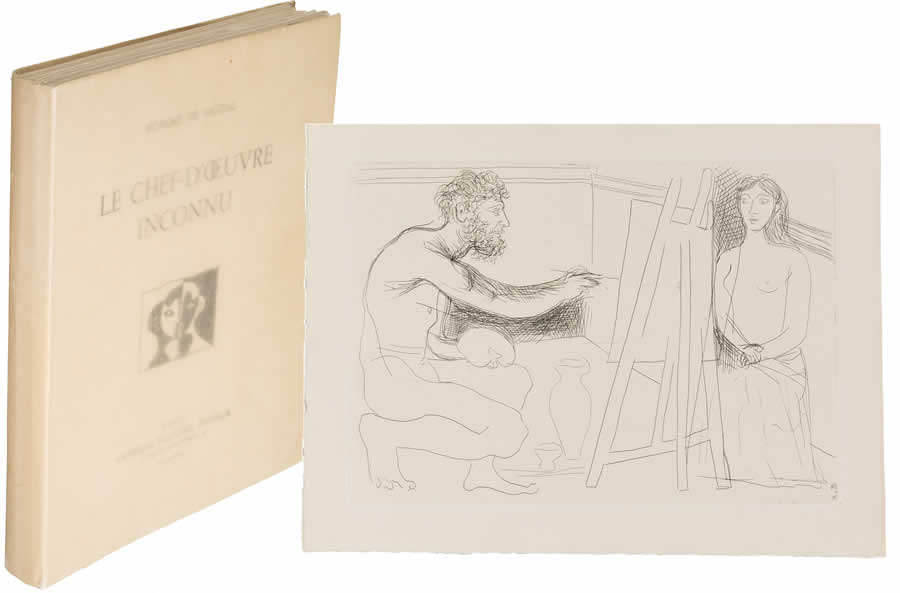BOOKS, MANUSCRIPTS IN THE ARTS, HUMANITIES AND SCIENCE REFLECT A PASSIONATE PURSUIT OF KNOWLEDGE
By Allan and Kim Stypeck
Maurice Car was an engineer by profession who represented France’s mining concerns in North America and was a dedicated collector in the arts, sciences and humanities. The material being presented in the Car Collection demonstrates his focus on highpoints and seminal works of key participants in these three academic arenas.
EVENT
THE MAURICE CAR COLLECTION OF ARTS & SCIENCES SIGNATURE® AUCTION 6218
Sept. 4, 2019
Live: New York
Online: HA.com/6218a
INQUIRIES
James Gannon
214.409.1609
JamesG@HA.com
After moving in 1940 with his artist wife Fanny and their four children from Paris to Washington, D.C., Car (1908-1968) remained an active participant in Parisian and international auctions, continuing to build his collection. His background in science accentuated his interest in obtaining items with substantive content spanning centuries of discovery in astronomy, mathematics, physics, chemistry, biology and archaeology.
The Car Collection reveals with extraordinary intimacy important scientific theory and application. Car’s engineering background especially informed his collecting in chemistry and physics, including Sir Isaac Newton’s 1672 handwritten “New Theory of Light and Colors” with a diagram based on experiments with a prism and Newton’s thoughts in 1694 on the weight and movement of water, also with a diagram.
Highlights from the collection in the field of science include the correspondence of Andre-Marie Ampere, one of the founders of the field of electromagnetism, relating his personal revelations on the human body’s nervous system; Antoine Lomet’s correspondence discussing different approaches to calculating the radius of the earth; astronomer Nicolas Louis de Lacaille’s treatise on his theory of perspective with handwritten tables and drawings; Augustin-Jean Fresnel’s letter to Francois Arago discussing light waves and developing a “mechanical theory of light” and their future collaboration on the topic; and correspondence by Louis Pasteur, including material relating to his experiments and his seminal presentation of the rabies vaccine.
There are countless common threads woven throughout the various disciplines represented in the Car Collection. Newton’s reflections on color are referred to in LaCaille “New Theory on Mixing Colors.” Matisse, in his 14-page handwritten manuscript in defense of his approach to painting, discusses the harmonies and dissonance of color.
Maurice and Fanny Car’s great appreciation of and involvement in a variety of art movements is accentuated throughout the collection. The Car’s circle of friends included Jean Cocteau. Cocteau personally inscribed to Fanny a limited-edition copy of his L’Ode a Picasso accompanied by his signature self-portrait, which is associated in this collection with the original two-volume manuscript of L’Ode a Picasso. The Cars were also befriended by surrealist artist and writer Valentine Hugo, who presented them with two original Picasso ink paintings with the three brushes Picasso used to paint them, along with Valentine’s manuscript memorialization of seminal radical writer Raymond Radiguet.
Enlarge
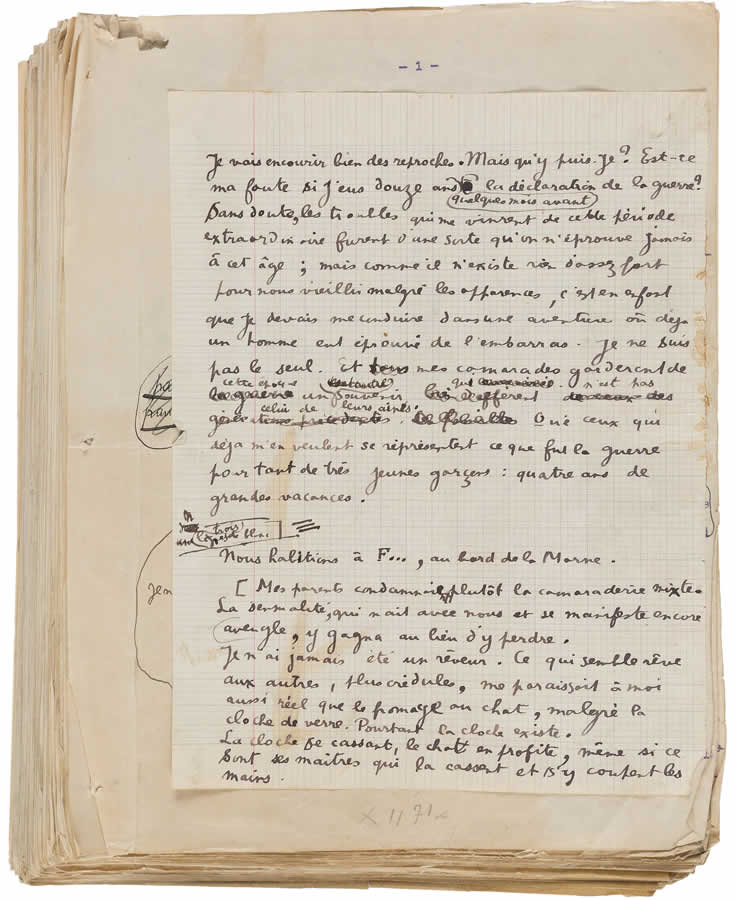
Radiquet, a poet and novelist, was labeled the “Enfant terrible” of the early Dadaist movement. The Car Collection includes Radiguet’s original manuscript of Le Diable au Corps, including a four-page typed, hand-annotated study of Radiguet by Francois Mauriac; a bound copy of “Trent-Neuf Poems,” which contains 45 pages of manuscript poems; limited illustrated editions of Les Jeues en Feu and Les Pelican; and a substantial collection of Radiguet’s original correspondence. The Dada movement is also significantly represented by a collection of correspondence and manuscripts by Tristan Tzara, an influential member of the Dada movement. Of the correspondence and manuscripts, titled “Documents, Autographs Sur Dada,” some are on Dada Institute letterhead and, along with a collection of original early 3-by-5-inch cubist and Dadaist sketches, are bound in an exceptional Paul Bonet period binding.
Other significant components of the Car Collection include representations of the majority of the late 19th- and early 20th-century international art movements. Paul Gauguin’s original hand-written lexicon of words in Tahitian and French, written by Gauguin while living and painting in Tahiti, is one of many items by major French impressionist artists, including Henri Matisse, Auguste Renoir, Edgar Degas, Paul Cezanne and Jules La Forque’s reflections on the origins and guiding principles of Impressionism and its impact on the art world as a nonconformist school of painting. Other periods of art are represented by Othon Friesz’s manifesto on Fauvism; Albert Gleizes’ reflections on art, specifically Cubism; Jean Gris’ thoughts on Futurism; and one of Marie Laurensen’s original manuscript sketchbooks, which includes drawings and watercolors, text notes and literary works.
The humanities are represented in the Car Collection, in part, by a bound collection of Ezra Pound letters and manuscript works written in 1926-27 at his home in Rapallo, Italy. This assemblage is comprised of correspondence and literary journal contributions, including his relationship with the New Masses Magazine, poetry and other manuscript writings, some of which are on his personal letterhead: a self-portrait in profile flanked by “E. Pound” on the left and “Rapallo” on the right.
As collectors, historians and academics mine the Car Collection, a term Maurice would appreciate, they’ll experience the same joyous discoveries that surely delighted and drove Maurice the collector. His dedication to compiling groundbreaking material spanning print, manuscripts and art is a testament to the greater quest for discovery and beauty.
This article appears in the Fall 2019 edition of The Intelligent Collector magazine. Click here to subscribe to the print edition.

